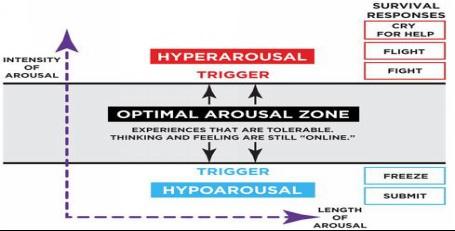
2 minute read
The meaning of extreme stress or trauma
For the better and coherent understanding of trauma for SIMPLE project needs , we are going to use a very broad definition of trauma . Trauma is a psychological and emotional response to an event or an experience that is deeply distressing or disturbing , such as being involved in an accident , having an illness or injury , losing a loved one , going through a divorce or moving to another country , far away from family and friends . However , it can also include experiences that are prolonged and severely damaging , such as rape or torture . In that case , it challenges deeply the trust within individuals .
As we subjectively look at the events , everyone processes traumatic events differently , because we all face them through the lens of previous experiences in our lives . A traumatic event is an incident that causes physical , emotional , spiritual , or psychological harm . The person experiencing the distressing event may feel threatened , anxious or frightened , as a result . Generally speaking , all the emotions are accompanied by changes into subjective body sensations and physiological activations , this last one defined also as arousal . For example , when we are angry we can feel an increase of skin temperature and an acceleration of breathing frequency .
Advertisement
In order to survive , when a traumatic event occurs , it elicits primitive and automatic responses in the body and changes in our arousal . At a physiological level , normally the two branches of the Autonomic Nervous System , the sympathetic and parasympathetic systems , work together to maintain the balance of our physiological arousal , defined as homeostasis . When we perceive a danger , our body enters into the “ alarm state ” and arousal modifications can go into two opposite directions : hyperarousal and hypo arousal . Hyperarousal prepares the body for the fight / flight response : entails muscles contraction , increases the heart rating and breathing . Hypoarousal , on the contrary , prepares the body for the shut - down response : it implies relaxing muscles , slowing heart rates and calming the breath frequency .
Even if the traumatic event happened since long , people who suffered from a general traumatic condition can be stuck into “ the alarm state ” without necessarily remembering the episode and without being aware of it . For instance , if I hear a car horn and then the car hits me while I am riding my bike , afterwards , whenever I hear a car horn , I can feel in my body and mind the same feelings I felt during the crash .
PICTURE : WINDOW OF TOLERANCE YOU WILL FIND A DETAILED THE TO PRESENT OL IN THE ATION HAND OF BOOK FOR PRACTITIONERS “MATERIALS AND TOOLS” (IO3)








